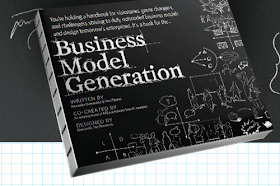It isn't always enough to create and promote an outstanding product or service. Often, your sales approach matters just as much as what you're selling. The most successful entrepreneurs create a connection with the customer by bringing their own personal touch to the sales process.
"People buy from people that they like and can relate to," says Adrian Miller, a sales trainer based in Port Washington, N.Y. "When business owners overlook the importance of that personal connection, they run the risk of losing the prospect to someone else--usually someone who took the time to create a relationship and help the prospect buy something rather than trying to simply sell to them."
Here are seven tips on salesmanship that can help you develop that special rapport with potential customers
1. Model your business on the corner store. If you long for the days of shopping at a local business where the owner knew your name and your family, try to emulate that experience. For instance, remember one or two details about your customer and bring them up in conversation. "If you know a customer has a daughter finishing up grad school, ask for an update," says Laurie Brown, who owns a sales training company in Detroit and is the author of The Greet Your Customer Manual (The Difference, 2011).
"Everyone likes to feel they're important enough that someone remembers the little things in their life. It's one important way we go past viewing customers as a dollar sign to a human who is appreciated."
2. Ask questions first. Before you launch into a hard sell, take time to probe your prospect. Ask questions that will help your customer explain what he's looking for. "Once you know that information, it's much simpler to show how your product or service can satisfy his wants or needs," Miller says.
"Probing is fundamental to relationship building, and the more skilled you are at utilizing open and closed ended questions, the stronger the relationship you will be able to create."
3. Court your clients. Selling is a lot like dating in that you have to woo customers and hope they return the attention. "Figure that for every 10 people you want to reach out to, three will want to set up appointments to hear more about your product," says Mark Faust, an adjunct professor at Ohio University and the author of Growth or Bust! Proven Turnaround Strategies to Grow Your Business (Career Press, 2011).
"To get a potential customer to call you back, you have to hook them somehow. Consider emailing them an article you found interesting that's related to their business and then give them time to respond. Whatever you do, be respectful of their busy schedule."
4. Talk about yourself. Another way to make it personal: Reveal something about yourself. Just be sure it's something your customer can relate to and isn't too personal, suggests Lourdes Martin-Rosa, an American Express OPEN Advisor who helps small businesses win government contracts.
"It's pivotal to connect in a real way. In fact, according to a study [in] the Journal of Consumer Research, if a salesperson shares a birthday or a birthplace with you, you're more likely to make a purchase from that salesperson and feel good about it."
5. Really listen to the prospect. There's nothing more insulting than feeling that you're being ignored in a conversation, says Matt Eventoff, owner of Princeton Public Speaking, an executive training company in Princeton, N.J.
"Asking someone a question and truly listening to the response, rather than beginning to formulate a response while the other person is speaking, is so important." In fact, small business owners may have a distinct advantage in connecting with customers because they are in touch with them so often. "The smaller the size of your business, the more encounters you'll have and the more opportunities you'll have to listen to your customers," Eventoff says.
6. Step away from your computer and smartphone. While it's often much quicker and less stressful to email a potential customer, face-to-face meetings and networking are far more effective in creating meaningful connections.
"These meetings are still among the best ways businesses can establish relationships with decision makers," says Martin-Rosa. "For instance, if you want to pursue the federal government as a customer, make the time to regularly visit the D.C. beltway. Communications should not be limited to email and phone--though both are important follow-up methods."
7. Be patient. Like many important things in life, it takes patience to develop lasting customer relationships. Fight the urge to rush the process.
"Take the time to explain how your product or service will benefit the prospect," Miller says. "Be patient as you go about cultivating this new contact. You never want to make a prospect feel rushed or hustled."



































